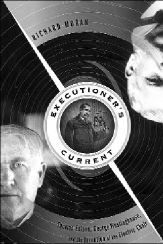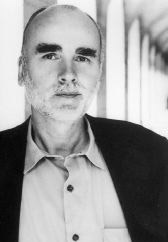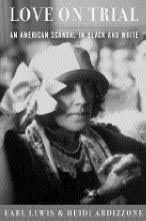EXECUTIONER’S CURRENT
by Richard Moran
(Knopf, $25)
THE GLITTERING LIGHTS strung around houses and holiday trees probably don’t put you in mind of Enron’s grab for control of America’s energy industries. With computer games and DVD machines dancing in our heads, who stops to think about the electricity that turns all this on, or how it’s delivered? But the American system of alternating current (AC), like Wal-Mart and Windows, grew out of struggles between men as deft as today’s CEOs at manipulating public officials, hustling consumers, and sinking the competition.
Executioner’s Current, by Richard Moran, a sociology professor at Mount Holyoke, opens in 1882, when Thomas Edison inaugurated the age of electricity (and of the electric chair) by building direct current (DC) power stations to light up parts of Manhattan. A few years later, George Westinghouse illuminated Buffalo by using AC, a more economical current because it travels greater distances. Edison, who had determined to make his DC technology the national energy choice, argued that his was the only safe current for public use. In a campaign to discredit AC, he set aside his personal opposition to capital punishment and damned Westinghouse’s discovery with perverse praise: He falsely maligned AC as unsafe and labeled it “the executioner’s current,” the only current dangerous enough to power the electric chair.
At the time, the electric chair was in its early stages of development. State governments were under great pressure to eliminate the death penalty, partly because executions by hanging were often revolting to witness. A well-managed hanging instantly snapped the convict’s neck, but quite a few criminals twisted and strangled in the wind for half an hour or else literally lost their heads. A few who apparently choked to death later revived, like the Scots murderess affectionately known as “half-hanged Maggie,” who jounced awake in her coffin en route to the cemetery.
Businessmen who had heavy investments in DC as the national energy source blitzed the public with Edison-supported claims that Westinghouse’s AC would be a fine, reliably fatal choice for the procedure of “electrocide” or “judicial lightning.” Evidence for their case was flimsy despite the eager experiments of one DC investor who used AC to shock dozens of dogs, calves, and horses to death in Edison’s laboratory. The first officially sanctioned electrocution of a human being, a confessed ax murderer named William Kemmler, turned out to be as cruel as any hanging.
The story is riveting, even for a squeamish reader like me. Moran’s lively reportorial style leavens a social history supported by 30 pages of footnotes and an index. However, the redundancies that merely serve to fatten the book should have been cut, along with a lengthy irrelevant chapter on Kemmler’s trial. This blow-by-blow account is, among other things, a reminder of the differences between good historical writing and real life (which an uneminent Victorian named O’Malley once described as “just one damn thing after another”).
Moran is at his best when suggesting the deep cultural roots of the classic American entrepreneur’s cocksure drive, ingenuity, and presumption, and at showing how far the branches of a resulting enterprise can penetrate into legislatures and the courts. In this narrative of callous ambition and hypocrisy, a condemned criminal plays an unexpectedly dignified role, as do citizens who fought for the humane treatment of all living things—including people. Eventually, too, the more affordable current became America’s chosen form of electricity: The current rigged to electric chairs is the same one that powers your Christmas lights. Captains of industry like Edison can’t win all the time.









